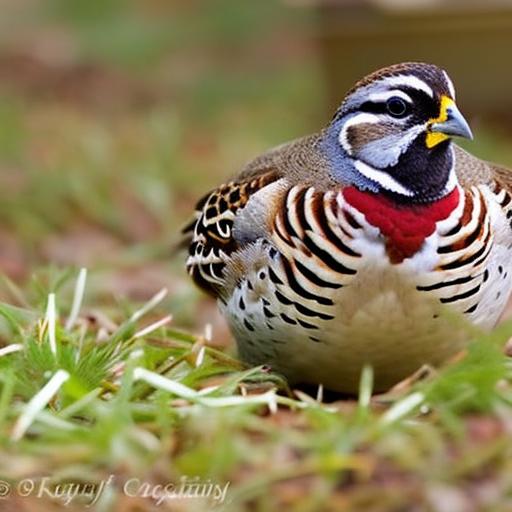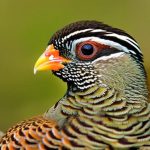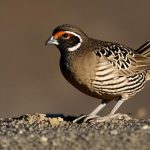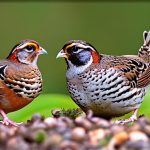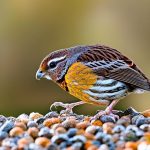Brooding quail is an essential part of raising these small game birds. The brooding period is a critical stage in the development of quail, as it provides them with the warmth, protection, and nutrition they need to thrive. During this time, quail chicks are particularly vulnerable and require careful attention to ensure their health and well-being. Brooding quail involves providing a controlled environment that mimics the natural conditions of a mother hen, including warmth, shelter, and access to food and water. This process is crucial for the successful rearing of quail and sets the foundation for their growth and development.
Quail brooding can be done using various methods, including brooding boxes, heat lamps, or commercial brooders. Regardless of the method used, the primary goal of brooding is to create a safe and comfortable environment for the quail chicks to grow and develop. It is important to monitor the temperature, humidity, and cleanliness of the brooder to ensure that the chicks are thriving. Additionally, providing the chicks with a balanced diet and access to clean water is essential for their overall health and development. Brooding quail requires careful attention and dedication, but it is a rewarding experience that sets the stage for the successful rearing of these fascinating birds.
Key Takeaways
- Brooding quail is the process of providing warmth, shelter, and care for newly hatched quail chicks.
- Quail should be kept in the brooder for 4-6 weeks to ensure proper growth and development.
- Factors such as temperature, feather development, and behavior should be considered when determining the duration of time quail should spend in the brooder.
- Signs that quail are ready to leave the brooder include fully developed feathers, ability to regulate body temperature, and increased activity.
- Keeping quail in the brooder for too long can lead to stunted growth, feather picking, and aggressive behavior.
- Transition quail out of the brooder by gradually reducing heat, providing access to outdoor space, and introducing them to adult quail.
- In conclusion, proper brooding duration and transitioning are crucial for the health and well-being of quail chicks.
Recommended duration for keeping quail in the brooder
The recommended duration for keeping quail in the brooder typically ranges from 3 to 6 weeks, depending on various factors such as the breed of quail, environmental conditions, and individual growth rates. During this time, quail chicks undergo rapid growth and development, transitioning from fragile hatchlings to robust juveniles. The brooder provides them with the warmth and protection they need during this critical stage, ensuring that they have the best possible start in life. It is important to closely monitor the quail chicks during this period and make adjustments to the brooder environment as needed to support their growth and development.
The duration of brooding can vary based on the specific needs of the quail chicks. Some breeds may require a longer brooding period to reach maturity, while others may be ready to transition out of the brooder sooner. Additionally, environmental factors such as temperature and humidity can impact the duration of brooding, as these conditions directly influence the growth and development of the quail chicks. It is important to observe the quail chicks closely and assess their readiness to leave the brooder based on their physical development and behavior. By carefully monitoring the quail chicks and considering their individual needs, you can determine the optimal duration for keeping them in the brooder.
Factors to consider when determining brooder duration
When determining the duration of brooding for quail chicks, several factors should be taken into consideration to ensure their health and well-being. One important factor to consider is the breed of quail being raised, as different breeds may have varying growth rates and developmental needs. Some breeds may require a longer brooding period to reach maturity, while others may be ready to leave the brooder sooner. Additionally, environmental factors such as temperature and humidity play a crucial role in determining brooder duration, as these conditions directly impact the growth and development of the quail chicks.
Another factor to consider is the overall health and development of the quail chicks. It is important to closely monitor their growth, behavior, and physical condition to assess their readiness to leave the brooder. Quail chicks that are thriving and showing signs of maturity may be ready to transition out of the brooder sooner than those that require more time to develop. Additionally, providing a balanced diet and access to clean water is essential for supporting the growth and development of the quail chicks during the brooding period. By considering these factors and closely monitoring the quail chicks, you can determine the optimal duration for keeping them in the brooder.
Signs that quail are ready to leave the brooder
There are several signs that indicate when quail chicks are ready to leave the brooder and transition to a larger enclosure or outdoor environment. One common sign is feather development, as quail chicks will begin to grow their adult feathers as they mature. Once their feathers are fully developed, they are better equipped to regulate their body temperature and can tolerate a wider range of environmental conditions outside of the brooder. Additionally, quail chicks that are active, alert, and exploring their surroundings are likely ready to leave the brooder, as they demonstrate a level of independence and confidence in their abilities.
Another sign that quail chicks are ready to leave the brooder is their ability to consume a varied diet and drink from a waterer without assistance. As they mature, quail chicks will become more proficient at feeding themselves and drinking water independently, indicating that they are ready for a larger living space with access to food and water sources. Additionally, observing the behavior of the quail chicks can provide valuable insight into their readiness to leave the brooder. Chicks that are socializing with each other, engaging in natural behaviors such as dust bathing, and demonstrating curiosity about their surroundings are likely prepared for the next stage of their development outside of the brooder.
Risks of keeping quail in the brooder for too long
While it is important to provide quail chicks with a safe and nurturing environment during the brooding period, keeping them in the brooder for too long can pose certain risks to their health and development. One potential risk is overcrowding, as quail chicks will quickly outgrow their brooder space as they mature. Overcrowding can lead to stress, aggression, and competition for resources such as food and water, which can negatively impact the well-being of the quail chicks. Additionally, prolonged confinement in a small space can hinder their physical development and limit their ability to engage in natural behaviors.
Another risk of keeping quail in the brooder for too long is reduced socialization and exposure to natural environmental stimuli. Quail chicks benefit from social interaction with their peers and exposure to a variety of environmental stimuli that promote their physical and behavioral development. Prolonged confinement in the brooder can limit their opportunities for socialization and exploration, which can impact their ability to adapt to new environments and interact with other birds as they mature. Additionally, extended exposure to artificial lighting and controlled temperatures in the brooder may hinder their ability to acclimate to natural light cycles and environmental conditions outside of the brooder.
Transitioning quail out of the brooder
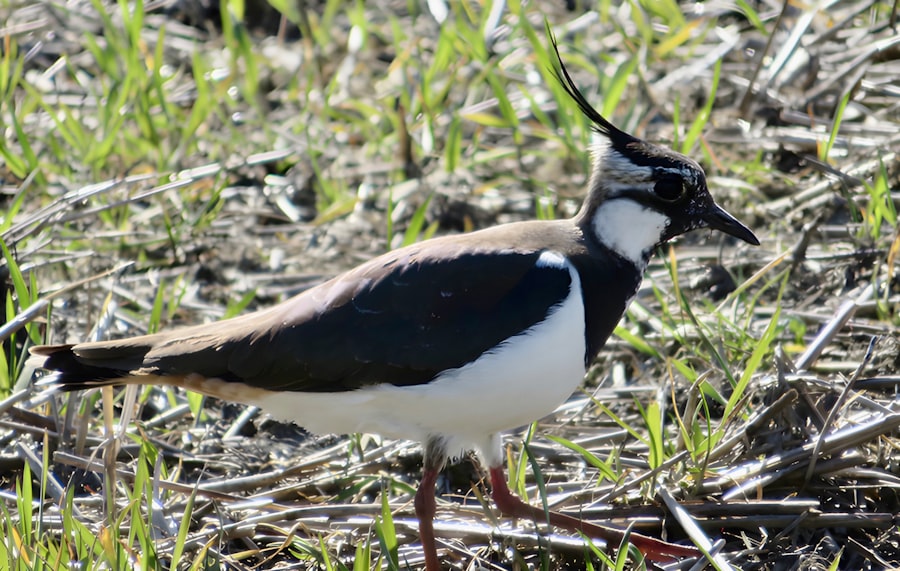
When transitioning quail out of the brooder, it is important to provide them with a suitable living space that meets their needs for warmth, shelter, food, water, and protection from predators. A larger enclosure or outdoor environment with access to natural light, fresh air, and opportunities for exploration is ideal for transitioning quail out of the brooder. It is important to gradually acclimate them to their new environment by providing them with access to a secure outdoor pen or coop that offers protection from predators while allowing them to experience natural environmental stimuli.
Additionally, providing a balanced diet that meets their nutritional needs is essential for supporting their growth and development outside of the brooder. Quail require a diet rich in protein, vitamins, minerals, and essential nutrients to thrive as they mature. Offering a varied diet that includes commercial game bird feed, fresh greens, insects, and grit will help ensure that they receive all the nutrients they need for optimal health and development. It is also important to provide access to clean water at all times to support their hydration needs as they transition out of the brooder.
Conclusion and final considerations
Brooding quail is a critical stage in their development that provides them with the warmth, protection, and nutrition they need during their early stages of life. The recommended duration for keeping quail in the brooder typically ranges from 3 to 6 weeks, depending on various factors such as breed, environmental conditions, and individual growth rates. When determining brooder duration, it is important to consider factors such as breed-specific needs, environmental conditions, overall health and development of the quail chicks.
Signs that indicate when quail chicks are ready to leave the brooder include feather development, independence in feeding and drinking water, social behavior, and curiosity about their surroundings. Keeping quail in the brooder for too long can pose risks such as overcrowding, limited socialization, reduced exposure to natural environmental stimuli, and hindered physical development. When transitioning quail out of the brooder, it is important to provide them with a suitable living space that meets their needs for warmth, shelter, food, water, and protection from predators.
In conclusion, brooding quail is an essential part of raising these small game birds that sets the foundation for their growth and development. By carefully monitoring their needs and behaviors during the brooding period, you can ensure that they have a successful transition out of the brooder into a larger living space where they can continue to thrive and mature.
If you’re considering raising quail, you may also be interested in creating the perfect environment for your chickens. Our article on building a farmhouse chicken coop provides valuable insights into designing a comfortable and functional space for your feathered friends. Just like with quail, providing the right brooder and coop setup is essential for the health and well-being of your poultry.
FAQs
What is a brooder?
A brooder is a heated enclosure used to raise young poultry, such as quail, until they are old enough to regulate their own body temperature.
How long should quail be kept in a brooder?
Quail should be kept in a brooder for approximately 4-6 weeks, or until they are fully feathered and able to regulate their own body temperature.
What temperature should the brooder be kept at for quail?
The brooder temperature for quail should be kept at around 95-100 degrees Fahrenheit for the first week, and then gradually decreased by 5 degrees each week until the quail are fully feathered.
What type of bedding should be used in the brooder for quail?
Pine shavings or paper towels are commonly used as bedding in quail brooders. It is important to use a material that is absorbent and easy to clean.
What should be provided in the brooder for quail?
Quail in a brooder should have access to clean water, a balanced quail starter feed, and a heat source to maintain the appropriate temperature. It is also important to provide enough space for the quail to move around and access to a hiding spot to reduce stress.
Meet Walter, the feathered-friend fanatic of Florida! Nestled in the sunshine state, Walter struts through life with his feathered companions, clucking his way to happiness. With a coop that’s fancier than a five-star hotel, he’s the Don Juan of the chicken world. When he’s not teaching his hens to do the cha-cha, you’ll find him in a heated debate with his prized rooster, Sir Clucks-a-Lot. Walter’s poultry passion is no yolk; he’s the sunny-side-up guy you never knew you needed in your flock of friends!

